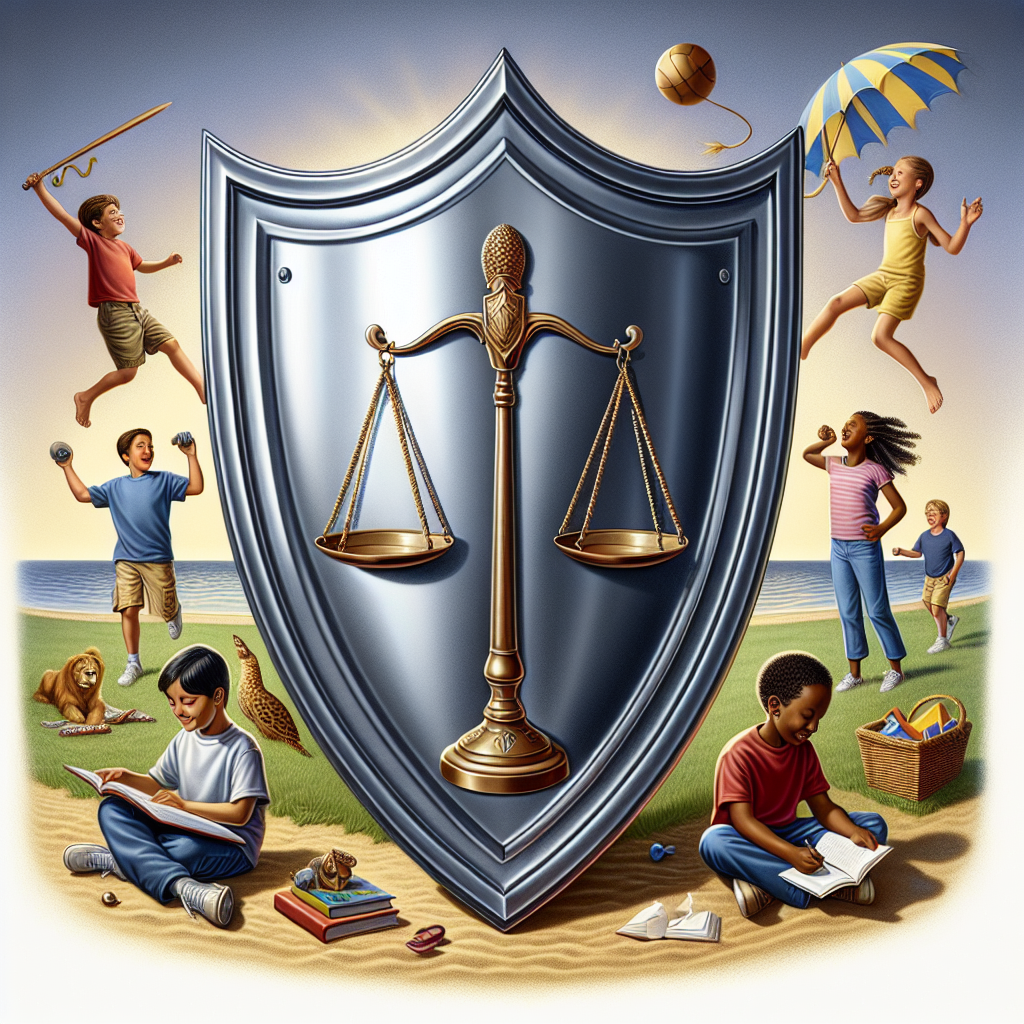The Scope of Child Injury Incidences
Child injury is a global health issue that should not be underestimated. It is significant to note that unintentional injuries such as road traffic injuries, drowning, burns, falls, and poisoning account for over 5 million deaths worldwide and are the leading cause of death among children. The World Health Organization reports that every day, approximately 2,000 families around the world lose a child to an unintentional injury or accident.
Impact of Age and Gender in Injury Cases
Age and gender also play a role in the prevalence of child injury cases. Younger children are more likely to suffer from certain types of injuries due to their curiosity and lack of understanding about potential dangers surrounding them. For example, toddlers and preschoolers are more prone to poisoning because they often put things into their mouths. Boys are generally found to be at a higher risk of injury than girls. This could be attributed to boys being encouraged to partake in riskier behaviors or activities.
Specific Locations and Child Injury
In addition, specific locations pose particular risks to children. Schools and playgrounds, for instance, can become dangerous environments where injuries may occur, especially when proper safety measures are not in place. Residential settings present another high-risk location for child injuries, particularly due to issues like inadequate supervision, unsecured furniture, unlocked cabinets with harmful substances, or unprotected windows and staircases. Human errors, like leaving small objects within reach that could lead to choking, also contribute to child injury incidences at home.
Interplay of Child Personal Injury Law and Children’s Rights
The Intersection of Children’s Rights and Personal Injury Law
Child personal injury law is intrinsically linked to children’s rights due to the protections it offers against physical harm or abuse. Both domains strive to protect children and provide remedies when their wellbeing or safety is compromised. In the context of children’s rights, the United Nations Convention on the Rights of the Child (UNCRC) sets international standards, while personal injury law provides legal recourse in situations where a child suffers physical or psychological harm because of someone else’s negligence or intentional act.
Role of Child Personal Injury Law in Upholding Children’s Rights
The primary purpose of child personal injury law is to secure compensation for injuries sustained by a child, with the ultimate goal of facilitating medical treatment and ongoing care. This aligns closely with the overarching objectives of international children’s rights, specifically the right to health, as stipulated by the UNCRC.
Moreover, personal injury law holds individuals or entities accountable for their actions, serving as a deterrent for behavior that might risk a child’s wellbeing. The law, therefore, strengthens the enforcement mechanism for upholding children’s rights, particularly the right to protection from all forms of violence and the right to an adequate standard of living.
Dynamics between Personal Injury Law and Violation of Children’s Rights
Cases of child personal injury often represent more than just isolated incidents; they may be indicative of systematic violations of children’s rights. When a child is injured due to negligent supervision at a school, for example, it suggests a possible breach of the child’s rights to education and to be safe from harm.
In these instances, personal injury claims can shed light on broader issues that violate children’s rights. Such legal actions can catalyze changes in policy, practice, or infrastructure to help prevent future harm to children, thus playing a significant role in promoting and enforcing the principles of children’s rights.
Key Aspects of Filing a Child Personal Injury Claim
Understanding Child Personal Injury Claims
Child personal injury claims are unique compared to those filed for adults because the law considers children unable to make legal decisions on their own. Therefore, an adult, typically a parent or guardian, must file the claim on their behalf. It’s critical to understand that there’s a difference in how these cases are handled legally, and it’s essential to consult with a lawyer who specializes in children’s personal injury cases.
Necessary Steps in Filing a Claim
The first step in making a child personal injury claim is determining the party at fault. Personal injury law works on the premise of negligence – a child is injured due to another person’s failure to exercise reasonable care. Once it’s clear who the negligent party is, a demand letter detailing the injuries, any medical treatments, and associated costs is sent.
Next comes negotiation, where both parties try to reach a settlement. If an agreement can’t be reached, the case may proceed to trial. The court process is designed considering the welfare of the child. For instance, they might not be required to attend certain proceedings to avoid additional trauma.
Time Limits and Settlements
One crucial aspect to consider is the statute of limitations. While most personal injury claims must be filed within a certain period from the date of the injury, child injury claims often have exceptions. Usually, the time limit doesn’t begin until the child reaches the age of majority, which is 18 in most jurisdictions.
When considering settlements, it’s essential to remember that the court has to approve all agreements to ensure the child’s best interest is served. Notably, the settlement amount usually goes into a protected account or trust until the child turns 18.
These aspects only provide a broad overview of child personal injury claims. Every case is unique, and therefore, hiring a legal professional experienced in such matters is invaluable.
How to Effectively Navigate the Legal System for Child Injury Cases
Understanding Child Injury Laws and Regulations
Child injury cases are often complex, involving a variety of federal, state, and local laws. To navigate effectively through the legal system, an understanding of these laws is crucial. Some states have specific rules for minors, such as shorter statues of limitations, or require court approval for settlements in child injury cases. Therefore, knowing the specifics of the jurisdiction where the incident occurred can significantly impact the outcome of a case.
Seeking Expert Legal Assistance
Injury cases involving children often require specialized legal expertise. An attorney who specializes in child injury law can provide invaluable assistance in understanding the nuances of the law, as well as ensuring that the best interests of the child are prioritized throughout the process. A skilled lawyer can evaluate the facts of your case, forecast potential challenges, and devise effective strategies to achieve the most favorable outcome. It’s also important to remember that legal counsel can handle communication with insurance companies and other parties involved, reducing the burden on the family during this stressful time.
Preservation and Presentation of Evidence
The success of a child injury case largely depends on the quality and presentation of evidence. Therefore, it is essential to preserve any documentation, medical records, photographs, and other materials that could substantiate the claim. This might be easier said than done, especially in the immediate aftermath of an accident. However, it’s important to gather and organize any evidence as soon as practically possible. Later, presenting this evidence effectively – a task often best left to a legal expert – will be key in building a convincing case.
The Role of Parents and Guardians in Protecting Child Injury Victims
Understanding Child Injuries and Prevention
Parents and guardians play an integral part in preventing children from becoming victims of personal injuries. The first step towards achieving this is understanding the various threats that pose a risk to the safety of children. These can range from motor vehicle accidents, falls from heights, swimming pool accidents, dog bites, dangerous toys, and chemical poisoning among many others. With this understanding, parents and guardians can take necessary actions to protect their children from potential harm.
The Importance of Supervision and Safe Environment
Another critical responsibility of parents and guardians is to provide adequate supervision for their children. This goes hand in hand with creating a safe environment for them, both inside and outside the home. Adequate supervision means being present, attentive, and prepared to intervene when necessary. It also extends to making suitable choices about caregivers or babysitters. Similarly, a safe environment involves ensuring home appliances and facilities are childproofed, installing safety measures like car seats and smoke alarms, and teaching kids about safety rules and precautions.
Legal Standpoints and Reporting Incidences
In addition to protecting children from injuries, parents and guardians also hold the responsibility of seeking justice for their children in case injuries occur due to the negligence of others. This may involve reporting the incident to the relevant authorities, and seeking legal counsel to help navigate through the legal processes that involve personal injury law. It’s crucial for parents and guardians to understand their role in holding responsible parties accountable and the importance of acting promptly and decisively in such situations.



